Editor’s note: This article was originally published in September 2013. Updated April 2022.
The name ‘wild cherry tree’ refers to a number of species in the genus Prunus. Some of the most common include the black cherry (Prunus serotina) and the chokecherry (Prunus virginiana), both of which are native to North America. There is also a species native to Europe called wild cherry (Prunus avium). All three of these common cherry species have similar characteristics, but there are factors that can help you tell them apart. Both the fruits and bark of the North American species have an interesting history of usage in Native American culture.
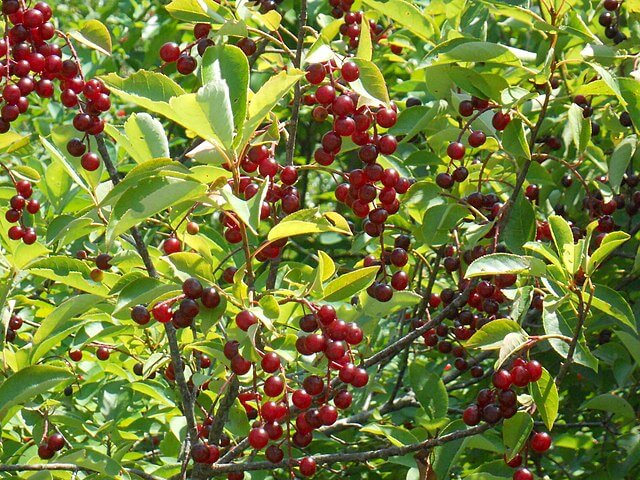
Edibility and culinary use
The only edible part of the plant is the flesh of the fruit, as, like store-bought cherries or apples, even the seeds contain toxins. The taste of the fruit can vary between species and even individual trees within the same species. The European wild cherry (Prunus avium) is also known as the ‘sweet cherry’. As the name suggests, the fruits are much sweeter than their North American cousins. Because of this, they are the original wild version of the cherries that we buy at the supermarket.
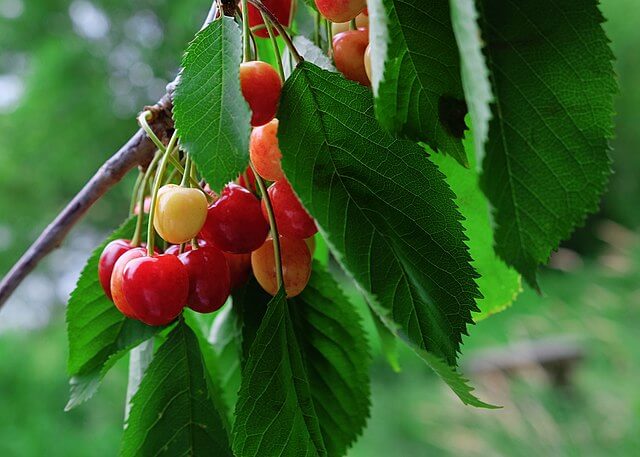
The black cherry and chokecherry have a similar taste which is usually described as bitter, often with a hint of sweetness. Some trees produce fruits with a sweeter taste, but the bitterness is almost always present. They can be eaten raw right off the tree as a snack while out walking or hiking. However, they’re more commonly used in pies and other recipes. If eating them raw make sure to choose the darkest and softest cherries, and make sure you spit out the seed. Wild cherries usually ripen in summer between May and June depending on the species and area.
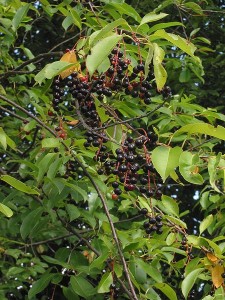
Health benefits of wild cherries
Cherries contain a number of very effective antioxidants including chlorogenic acid, quercetin, and kaempferol. Some studies involving chokecherries indicate that they could potentially lower high blood pressure. The high number of antioxidants in black cherries could also help to ease inflammation caused by conditions like arthritis.
Cherries are an excellent source of fiber, potassium, and many B-vitamins. HealthTrends.com has some more indepth information on the benefits of B-vitamins and potassium in your diet.
Cautions and lookalikes
The leaves, bark, seeds, and all other plant parts of the cherry tree contain a substance called hydrogen cyanide that can break down into cyanide. It’s a well-known toxin that can be very harmful to humans. Grazing animals are often lethally poisoned by eating too many cherry leaves. Hydrogen cyanide has a very bitter taste, so if you ever come across berries that are extremely bitter it may be best to avoid them.
When foraging for any wild berries, make sure to follow these fundamental identification steps. Wild cherries generally do not closely resemble any poisonous wild fruits. However naive foragers could mistake black cherries (Prunus serotina) for deadly nightshade or moonseed berries.
How to identify wild cherry
Wild cherry trees can usually be identified by their leaves and bark. The leaves will have finely serrated edges and the bark typically features horizontal lenticels on newer growth, and sometimes older growth too. Chokecherry and black cherry trees are very similar in appearance, however, the chokecherry tree usually has smaller, glossier leaves.
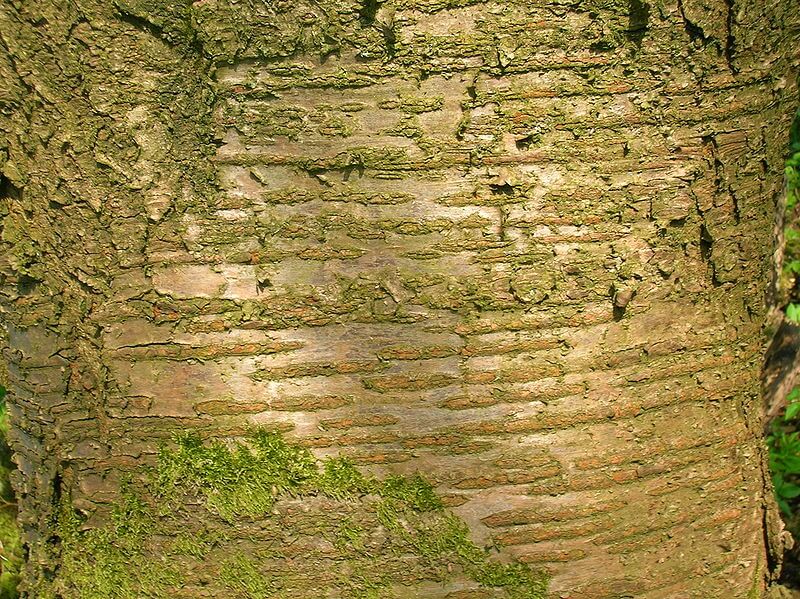
Another good identification feature is that many cherry trees have a fungus called black knot which creates large and small cankers or burls on the tree. Black knot affects many plants in the Prunus genus including cherries and plums. When collecting wild edibles, always make sure to follow Safe Foraging guidelines.
Wild cherries in Native American culture
Cherries were a vital source of nutrition to ancient cultures across Europe and North America, including Native Americans. Wild cherries would have been eaten freshly picked or dried and stored with other berries as a winter supply of fruit. The dried fruits would be used in many dishes including ‘pemmican’, a traditional high-calorie Native American food that was created for long journeys. Dried meat and fruits would be ground down and then mixed with animal fats and stored in rawhide bags to preserve them.

The bark of wild cherries was also collected and used in Native American medicines. It would be ground into a powder or boiled to create teas. It was used mainly to treat respiratory illnesses like coughs and colds. However, it was also used to stem bleeding, and treat digestive complaints like diarrhea or cramps. Chokecherry bark was also used by some groups in a herbal smoking mixture known as Kinnikinnick. The ingredients varied between groups, but it usually contained notable bark and leaves from certain valued plant species.
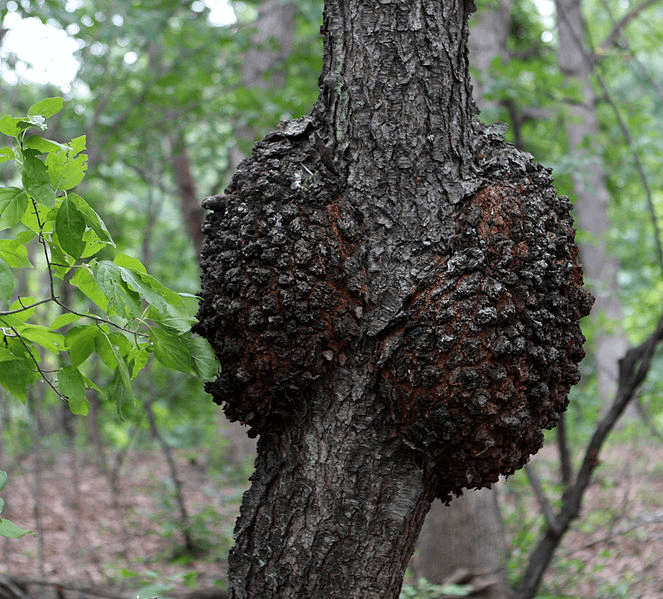
Conclusion
Chokecherry and black cherry trees are a common find in many parts of the US, especially in the eastern states. They’re also a valued food source for plenty of wildlife too, especially deer, birds, and even bears. If you identify a tree in the wild, or even in your own backyard, try a cherry or two. Personally, I like to eat them freshly picked in small quantities during the summer.
Do you have a local source of wild cherries near you?
Many of our readers find that subscribing to Eat The Planet is the best way to make sure they don't miss any of our valuable information about wild edibles.
See our privacy policy for more information about ads on this site







9 Responses
I find these articles on wild edible Fruits very interesting. I live in New England, USA and I am wondering if there is a book out with all this information in it. Making jams with these fruits and possible fruit pies sounds great to me.
making jams and pies from wild fruits is great, my mom has done it ever since i was a kid. One of the best new england fruits for pies and jams is autumn olive. elaeagnus umbellata, because it is so common, and the plants ussually produce loads of fruits its easy to get a large bowl full, they ussually grow in old field, and woods edges. some other great fruits for new england for pies and jams is wild grapes, any plant in the genus rubus(raspberries, blackberries), and an interesing one which i have not made into a pie yet is kousa dogwood. slighlty tropical flavor.
Just to be completely clear, though Autumn Olive does grow prolifically in New England and is used for pies and jams, it is not a native. Neither the Indians nor the English settlers would have used it. Autumn Olive is an Asian invasive, and gets out of hand very quickly.
Wild grapes, on the other hand, are 100% native.
Informative one
Western Catskill Mountains, Upstate NY, At this time wild black cherries and choke cherries are tiny little green balls, will not be ready for weeks yet. Choke cherries make a wonderful jelly and grow on fairly small shrubs, rarely 15 feet tall and easy to pick if you beat the birds to them. Black cherry however may reach heights of 60-80 feet and are more difficult to pick. I take the cherries and simmer them in a little water in a covered pot for a few minutes. Then sieve them thru my Grandma’s Foley food mil thus retrieving all the juice and pulp well removing the pits and skins. If I am not using the juice immidiatly I can it in Mason jars for later. Shadberries are also almost in season here.
I have a wild cherry tree in my yard here in Western NC and the leaves seem to have multiple new leaves sprouting from a lot of the leaves what is this??
We have them behind our homeschool house. Going to dry them this week, and ad them to our, wild black plums, elderberries, and beaked hazelnuts for pemmican.
I pick a gallon of wild black cherries each May ( (south Louisiana) and make “bounce”.
If you don’t know what “bounce” is, research the term.
You’ll enjoy !!!
Need the best Wild Cherry Tree in America
for my book
Christopher Baldwin
ChrisBaldwin@me.com